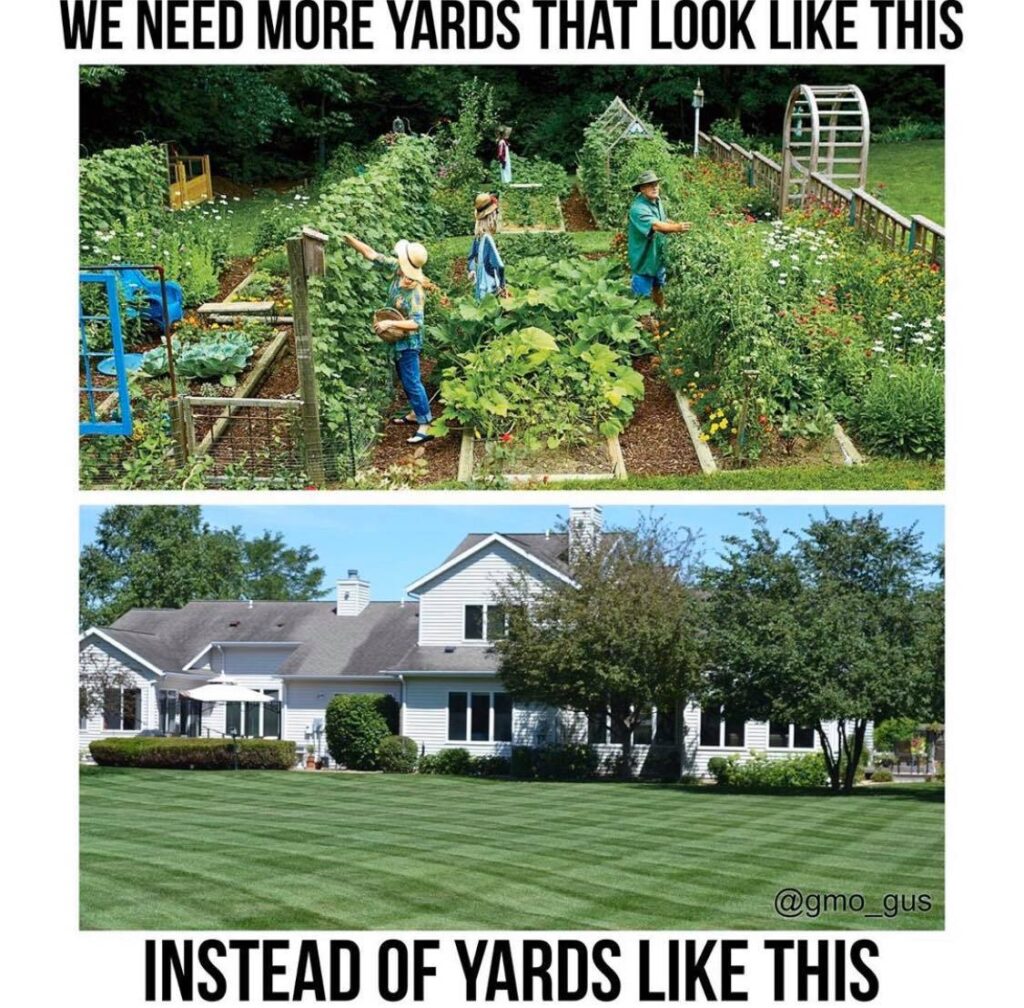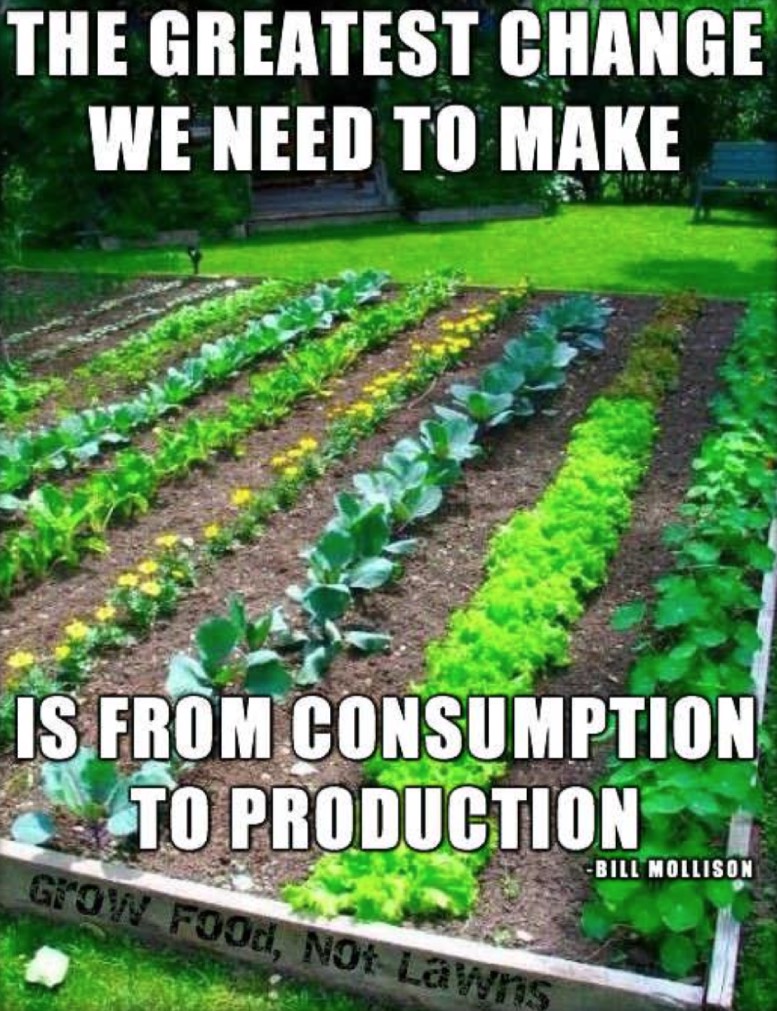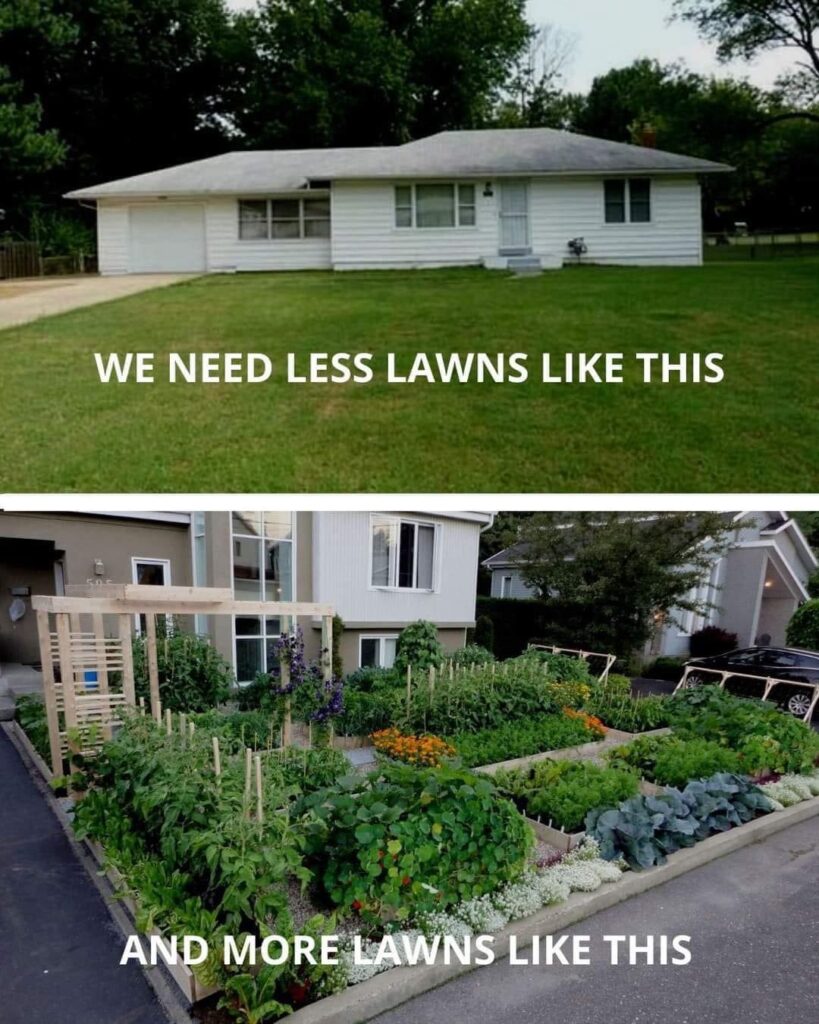American-style suburbs, present globally, were initially established to provide a connection with nature. Regrettably, they now embody an unhealthy and environmentally damaging lifestyle. It’s time for a change! Gardening is making a comeback and is becoming fashionable once again.
Suburban paradox
Contemporary agriculture requires vast amounts of water, energy, synthetic fertilizers, and space to cultivate crops such as carrots, lettuce, and blueberries, which can negatively impact biodiversity. The final products, packaged in plastic bags, must then be transported over long distances to reach grocery stores and supermarkets, leading to increased consumption of fossil fuels.
Let’s have a look at the average suburban resident
He has just completed mowing the expansive lawn using a lawn mower. He then switches the mower seat for the comfortable one in his SUV. He quickly jots down on his smartphone that he needs to restock his herbicides and synthetic fertilizers for the lawn and thuja. He activates the irrigation sprinklers using a specialized app, and sets off to the nearest grocery store to purchase produce.
This depicts the reality of barren residential areas with monotonous, mowed lawns and highly productive farmland, both of which require extensive natural resources, effort, and technology and are equally harmful to biodiversity, the environment, and the climate



Source: facebook.com/GrowFoodNotLawns
Flower beds instead of lawns!
It’s time for suburban residents to redirect their efforts and resources towards constructing diverse and food-producing ecosystems in their own gardens. A diverse array of plants, including spring-blooming fruit trees and shrubs, would enhance the aesthetics of their living environment. Additionally, it would free up space currently used for intensive agriculture and allow for the growth of natural ecosystems.
This is not a utopia, it is already happening.
Social movements, such as the US-founded “Food Not Lawns”, promoting a return to backyard farming are gaining popularity all around the world.
The power of permaculture
In simple terms, permaculture gardening refers to a set of techniques that, by utilizing the interconnections present in an ecosystem, allow for the effective cultivation of edible plants with minimal effort and resource consumption. This includes, for example, the utilization of symbiotic relationships between certain plant species, or the creation of no-till, low-maintenance garden beds that require little irrigation, weeding, or fertilization. The concept is based on replicating the processes of organic matter decomposition and layering found in the forest floor.
Advocacy for permaculture gardening is a key focus of organizations such as Food Not Lawns. The widespread availability of resources such as books in multiple languages, online courses, and social media groups make it easier for individuals to learn and become knowledgeable in this field.
As a result, many of us can change the world simply by growing our own garden.
Łukasz Kamiński












